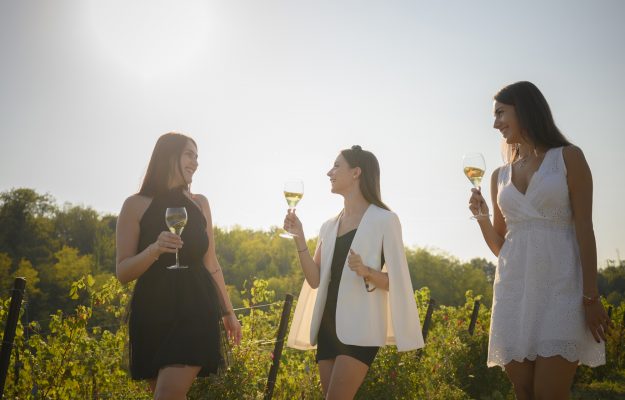Inflation, skyrocketing energy costs, political and International tensions have cast dark shadows on the near future. The Italian wine and catering sectors, as well as Italian tourism, however, up until now can toast to a full recovery in 2022. The merit of their success goes mainly to the appeal of rural areas, villages, wineries, wines, kitchens, farms and restaurants. They celebrated yesterday, on “World Tourism Day”, which represents a definite asset for the Italian economy. Massimo Garavaglia, the Italian Minister of Tourism has defined the many professionals and workers in the sectors “heroic”, because of their ability to overcome first the Pandemic and then to fight against increases in costs. Up until now going towards the end of 2022 has been very positive, and many reports confirm this. For instance, Agriturist (Confagricoltura), counting the 24.000 Italian holiday farmhouses, which at the end of summer registered better than pre-Pandemic levels in terms of attendance. According to the public businesses federation, FIPE / Confcommercio in the second quarter of 2022, companies’ turnovers grew 67.9% compared to 2021, and + 9.8% compared to 2019, which was the last actual "free" year. These figures are thanks to the foreign tourists who have returned en masse, as well as Italian tourists. Seventeen percent of them, according to Coldiretti / Ixè, say that food and wine experiences are the first item of choice for a holiday destination. And, 56% say they are very important, so much so that 58% visit oil mills, shepherd’s huts, wineries, farms, farmhouses or farmers’ markets. The various offers of food and wine linked to tourism, put Italy at number 1 world wide, as the United Nations World Wine Tourism Forum in Alba, held recently, explained, where it was confirmed that Italy is worth 2.5 billion euros, and accounts for 27%, on average, of wineries’ turnovers, which is why 9 out of 10 offer some form of tourist accommodation. And, among others, Roberta Garibaldi, writer for the Observatory on Italian Wine & Food Tourism, and CEO of the ENIT - National Tourism Agency also confirmed. She emphasized the trends that drive the growth of wine tourism; for instance, the desire to “Live Outdoors” (it became a necessity during the Pandemic and now is more and more in demand), through wine trekking, wine picnics, and dinners in the vineyard. «Nature Bathing”, which is a rapidly growing trend where immersion in nature is essential, including yoga, Spas and painting courses in the vineyards. There is “New Urban and Rural Connections»; that is, to bring masses of tourists from the cities to the countryside, and also vice versa, to the rural vineyards. Another trend is “Innovative Hospitality”, wineries offering wine hotels, glamping and gourmet restaurants. And, “New Wine Travelers”, the new types of wine travelers — women, young people and lovers of art and culture. Garibaldi has pointed out in her studies that experience is the topic that more and more makes the difference. It is most appealing when technology possibilities are combined — even for wine tastings (from virtual reality to “metaverse”, from interactive museums, “gastronomic hubs”, to augmented reality through QR codes), to the “human touch”, especially when the producer him/herself is present at the tasting or telling the story of the wine and the product. In a nutshell, in other words, we have come this far and this is where we shall start again to make tourism and enotourism grow. The scenario is actually more uncertain and challenging than ever, but we do have the certainty of Italy’s appeal and its wine territories (and more).
Copyright © 2000/2025
Contatti: info@winenews.it
Seguici anche su Twitter: @WineNewsIt
Seguici anche su Facebook: @winenewsit
Questo articolo è tratto dall'archivio di WineNews - Tutti i diritti riservati - Copyright © 2000/2025









































































































































































































